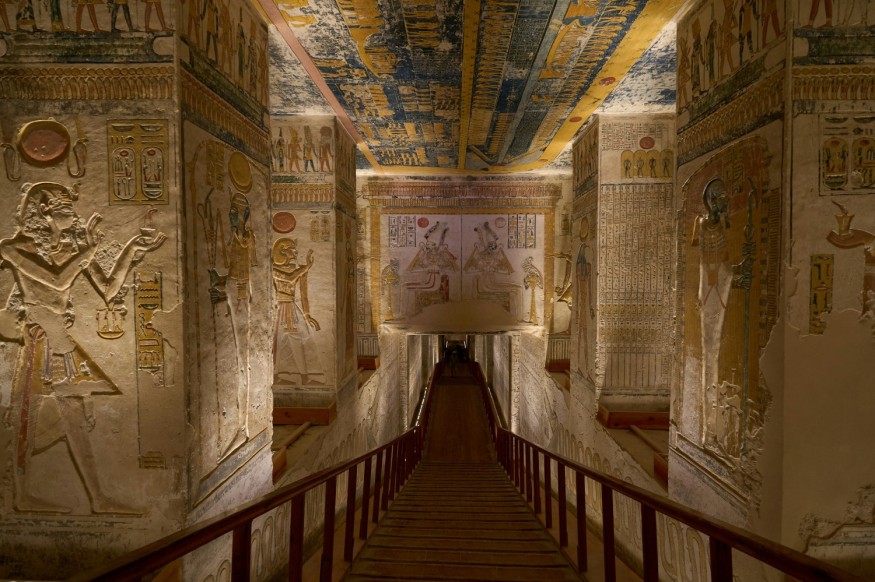Archaeologists Exceptional Discovery Unveils Over 30 Ancient Egyptian Tombs in Aswan

As a result of the discovery, more than 30 tombs belonging to the ancient Egyptians have been discovered on the hillside of Aswan, an ancient city located at the Nile. Many of these tombs are from the Greco-Roman period, and they've revealed much about the people who once would have inhabited this industrious coastal town.
Contents of the Tombs
The discovered tombs include families buried on masses with wooden and glazed coffins, cartonnage made of reused papyri or cloth, vine-leaf designs on amphorae, and other artifacts such as offering tables.
Discovery Process and Excavation
"It was a rich place, an important place," remarked Patrizia Piacentini, an Egyptologist and archaeologist at the University of Milan. Piacentini leads the joint Egyptian-Italian mission at the site. "All the people who intended to make trade between Northern Africa and subtropical Africa, this was the place for them, and it was a place for all the history of ancient Egypt," she added. The burial site came to light in 2015 following a series of illegal excavations. The Egyptian government subsequently enlisted local archaeologists to survey the area, leading to the discovery of tombs dating from the late Greek and Roman periods (approximately 332 B.C. to A.D. 395). Former Egyptian Minister of Antiquities, Khaled el-Enany, contacted Piacentini, who has involved a big group of Egyptian and Italian professionals and resumed the area survey in 2019. Their work uncovered pyramid-like structures that were tombs arranged one on top of the other on one of the hills close to the mausoleum of Aga Khan IV.
During the excavation, archaeologists discovered ancient oil lamps, possibly left behind by mourners. "We can imagine how spectacular it was when, for example, during the [mourners'] feast, all these tombs were illuminated," Piacentini told Live Science. "I think that was something absolutely spectacular." The tombs were built into the rock, spanning a vertical height of at least ten levels, unlike other tombs from the period, typically two to three levels high.
Historical Timeline
The tombs were in use for around 900 years, from the sixth century B.C. to the second or third century A.D., encompassing significant historical periods, including Persian rule (525 to 404 B.C.), the Greek Ptolemaic dynasty initiated by Alexander the Great's general Ptolemy I Soter, and Roman rule when Egypt became a province of the empire. The tombs' hierarchical structure placed the elites at the hilltop, with middle-class individuals occupying the lower levels.
Analysis revealed that 30% to 40% of the mummies in the newly discovered tombs were children as young as two years old and newborns, according to a translated statement from the Egyptian Ministry of Tourism and Antiquities. "We found many families, in fact, mother, father, and children," Piacentini noted. "Probably there was some infection that killed the family or one died after another."
One intriguing find included two mummies initially considered mothers and sons. However, further analysis revealed they were brothers buried alongside their parents.
Medical Collaboration
To gain deeper insights into the causes of death, the team collaborated with doctors at the University Hospital in Aswan. They conducted X-rays, CT scans, and DNA analyses, which identified anemia and infectious diseases as prevalent causes of death, even among affluent individuals. Examination of the mummies' backbones confirmed tuberculosis in some cases, suggesting entire families may have been wiped out by the disease.
"This discovery has been exceptional and very promising with many new aspects we are trying to understand," Piacentini stated. The team aims to continue its mission to uncover the history of the diverse populations that inhabited the city. So far, they have mapped out at least 300 tombs in the necropolis area, covering about 215,000 square feet (20,000 square meters), with potential for even more discoveries.
As the team delves deeper into this extraordinary site, each new find promises to shed light on the rich tapestry of Aswan's ancient past, revealing its inhabitants' lives, deaths, and enduring legacy.













